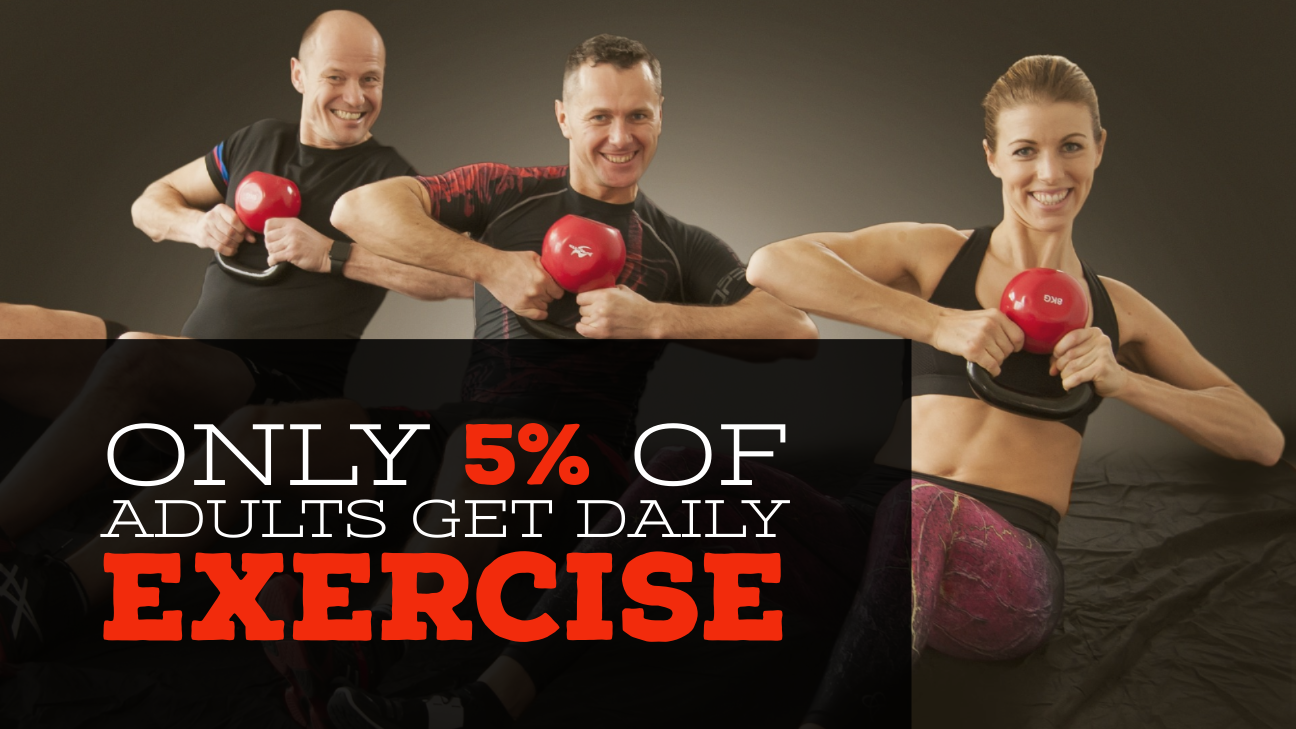 Many individuals, even those with gym memberships, do not exercise often enough. On average, the frequency of gym visits amongst gym members is twice a week.
Many individuals, even those with gym memberships, do not exercise often enough. On average, the frequency of gym visits amongst gym members is twice a week.
Among millennials, only 45% exercise regularly, according to a Nielsen Global Consumer Exercise Trends Survey. Under 5% of adults exercise for even 30 minutes daily, and only a third participate in weekly recommended amounts of physical activity.
When it comes to the senior population, the statistics are worse. The largest demographic of gym-goers are between the ages of 20 and 64. For adults aged 75 years and older, only 35 to 44% stay active. For those aged 65 to 74, only 28 to 34% stay active.
Personal fitness training may be something the senior population may want to consider in order to maintain health.
The Benefits Of Staying Active
Active lifestyles are linked to weight loss and overall better health. A loss of 5 to 10% of body weight has been proven to lower risks of heart disease. HDL levels (levels of “good” cholesterol) may increase by five points. Blood pressure lowers on average too, decreasing by 5 mm Hg in both systolic and diastolic measures.
LDL And HDL Cholesterol
HDL (high-density lipoprotein) is known as “good” cholesterol because it assists with the removal of “bad” cholesterol from the bloodstream. The higher an individual’s level of HDL cholesterol, the lower the associated risk of heart disease.
At its core, cholesterol is a waxy substance present in all cells, and it aids several bodily functions such as such as sex hormone production and bile production, as well as serving as a building block for tissues.
Too much LDL (low-density lipoprotein) hardens the arteries and narrows blood vessels as a result of plaque build-up on artery walls, constraining the flow of oxygen-rich blood. If a clot ends up blocking blood flow, a stroke or heart attack may occur.
This is where “good” cholesterol comes into play. HDL assists with the maintenance of cardiovascular system health. It helps bring LDL from the arteries back to the liver, where the “bad” cholesterol is metabolized and eliminated from the body.
Higher levels of HDL is associated with lowered risks of strokes and heart attacks.
Blood Pressure
Blood pressure is the measured strength of blood pushing against vessels. It closely relates to the health of the body’s circulatory system.
In a reading of blood pressure, there are two numbers, one placed on top of the other. The top number is systolic, the highest pressure reached during a heartbeat. The bottom number is diastolic, the lowest pressure measured when the heart relaxes.
Keeping blood pressure low is important especially for individuals over the age of 50, since high blood pressure greatly increases the risk for cardiovascular disease. Stiff arteries and plaque accumulation – as a result of high LDL cholesterol levels – lead to cardiac and vascular issues, possible heart attacks and strokes.
Personal Fitness Training For Seniors
Let’s take a look at the benefits of training, specifically for the older demographic.
When searching for options in order to stay physically active, individuals should consider looking for a gym that offers programs related to strength training or weight training, perhaps even weight lifting. This may sound a bit daunting for those at higher ages simply because older bodies are typically less resilient than younger ones, but there are many benefits to strength training for seniors.
Consider personal fitness training if you need help staying accountable to workout goals. Regardless of whether an older individual opts for a personal trainer or not, any physical activity is better than none.
Apart from reducing symptoms of physical health issues associated with age – such as osteoarthritis, osteoperosis, and joint and muscle pain– there are also other general benefits provided to individuals of all ages.
Exercise reduces anxiety and tension. It provides an emotional lift and promote relaxation. Confidence and self-esteem improves, as well as muscle strength, endurance, flexibility, and cardiovascular health. Energy levels are boosted. Daily activity demands become easier to tackle. Individuals benefit from deeper, better quality sleep.
Seniors looking to maintain and improve their physical should definitely consider personal fitness training. Older age and the greater health risks associated with it should not make the option seem daunting. Rather, the benefits of physical activity should greatly encourage that step towards any sort of exercise.
